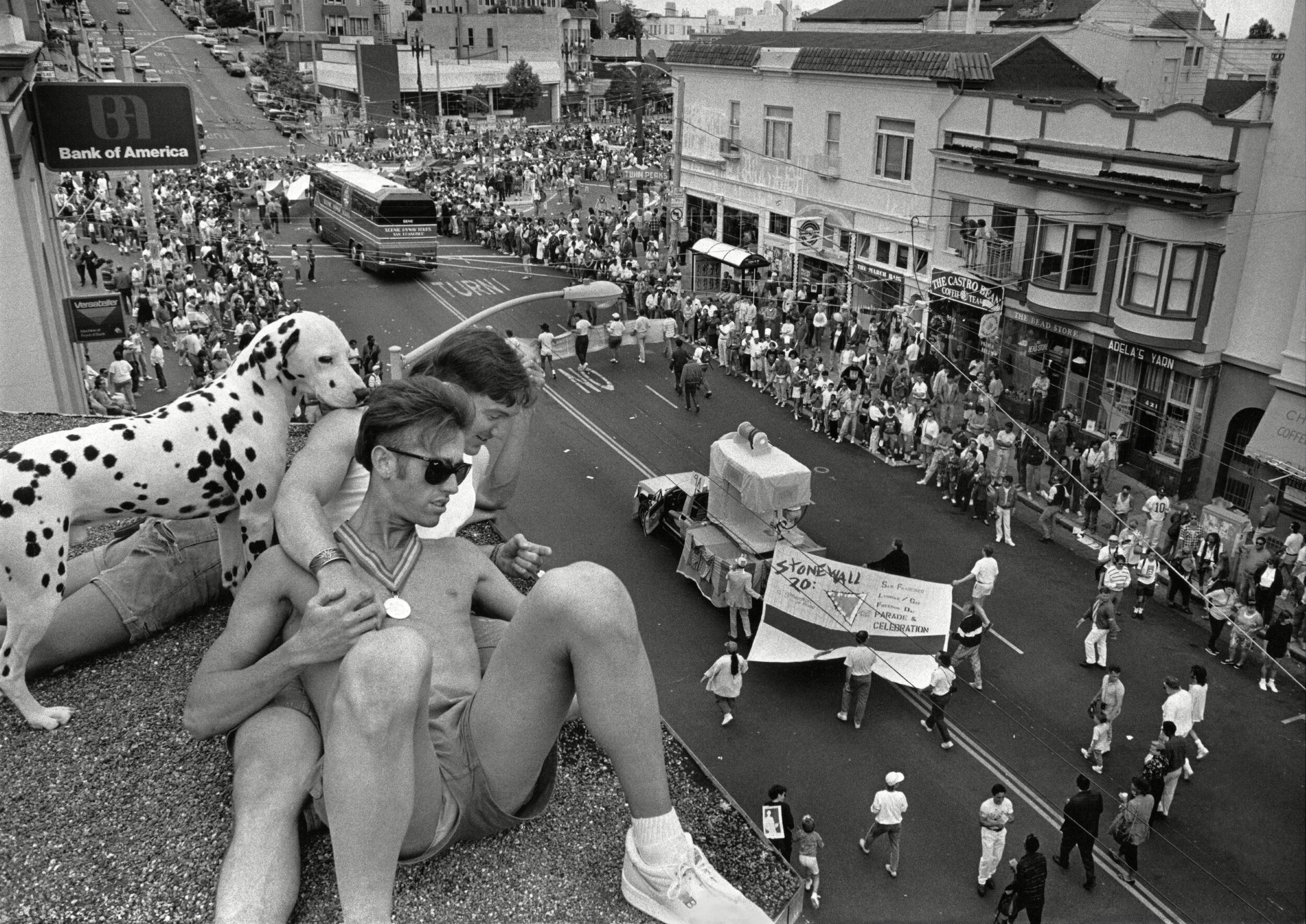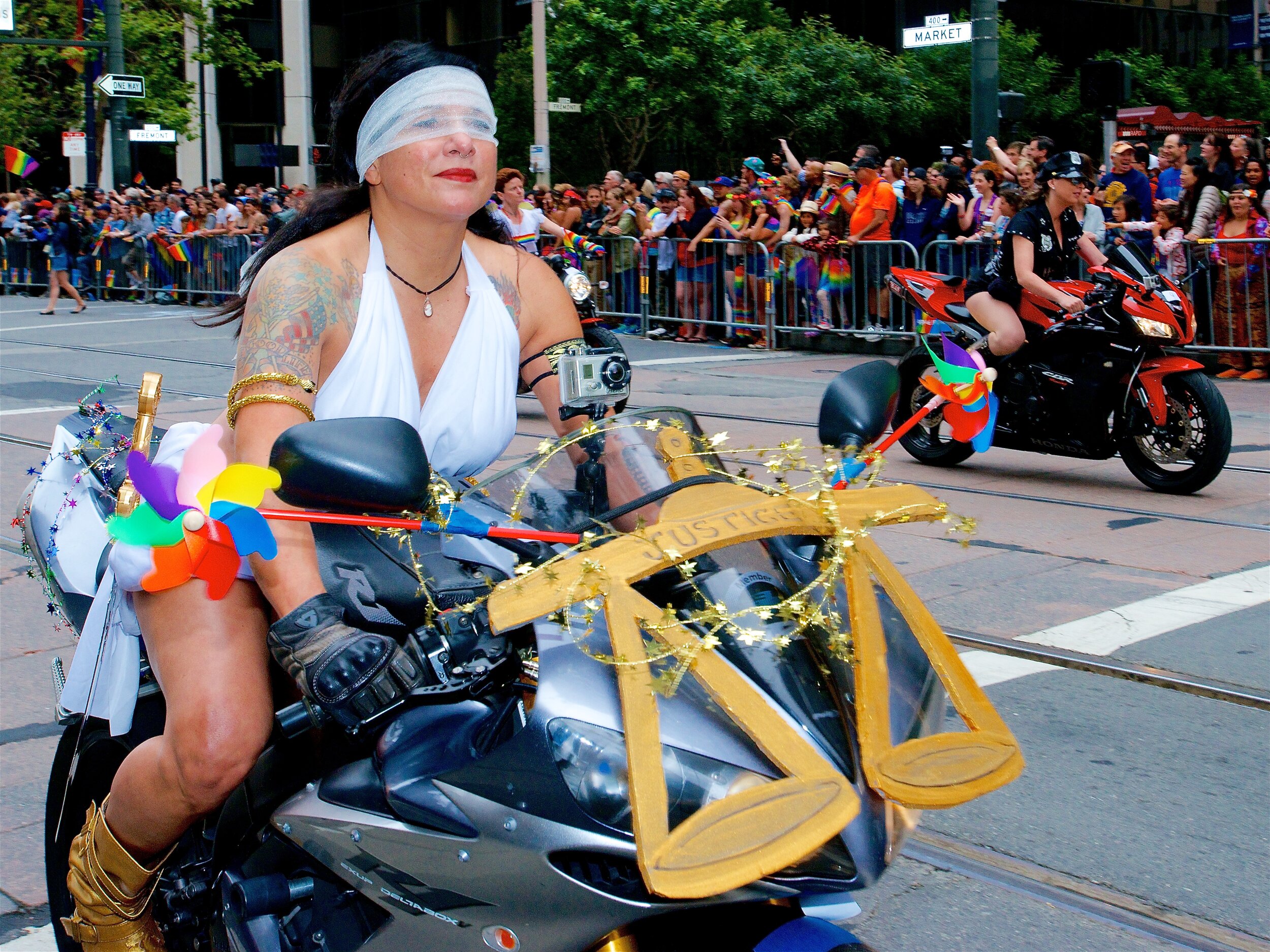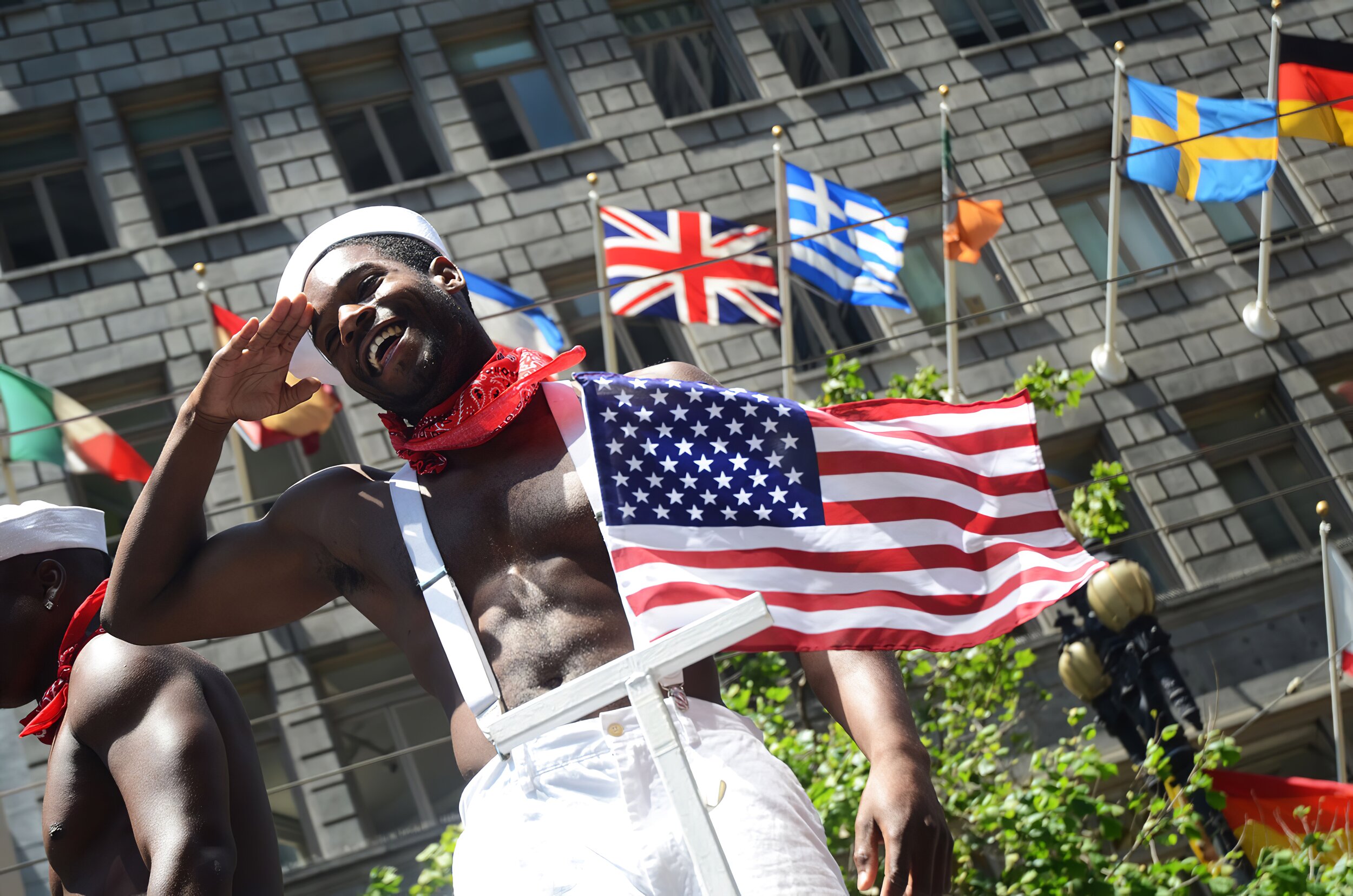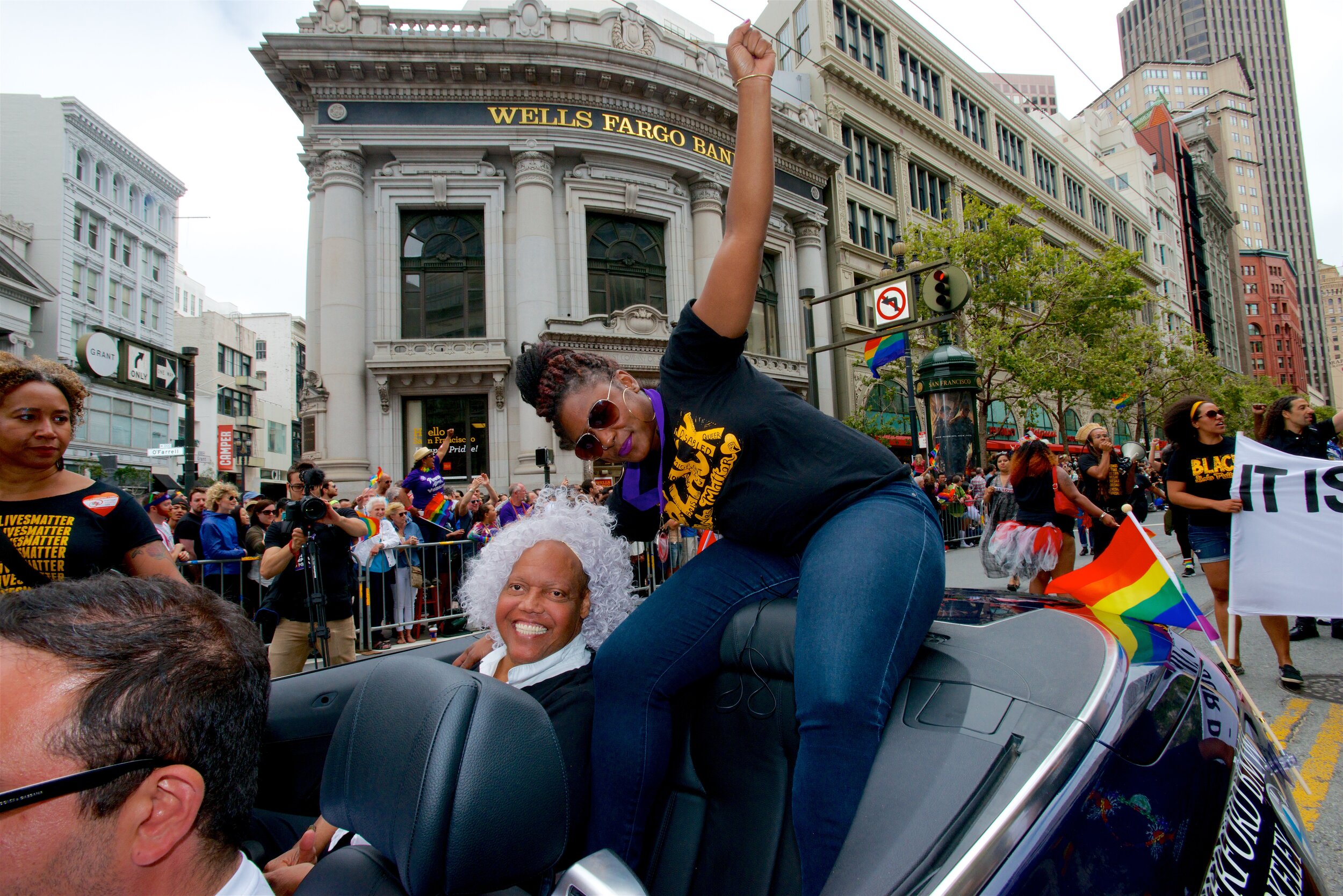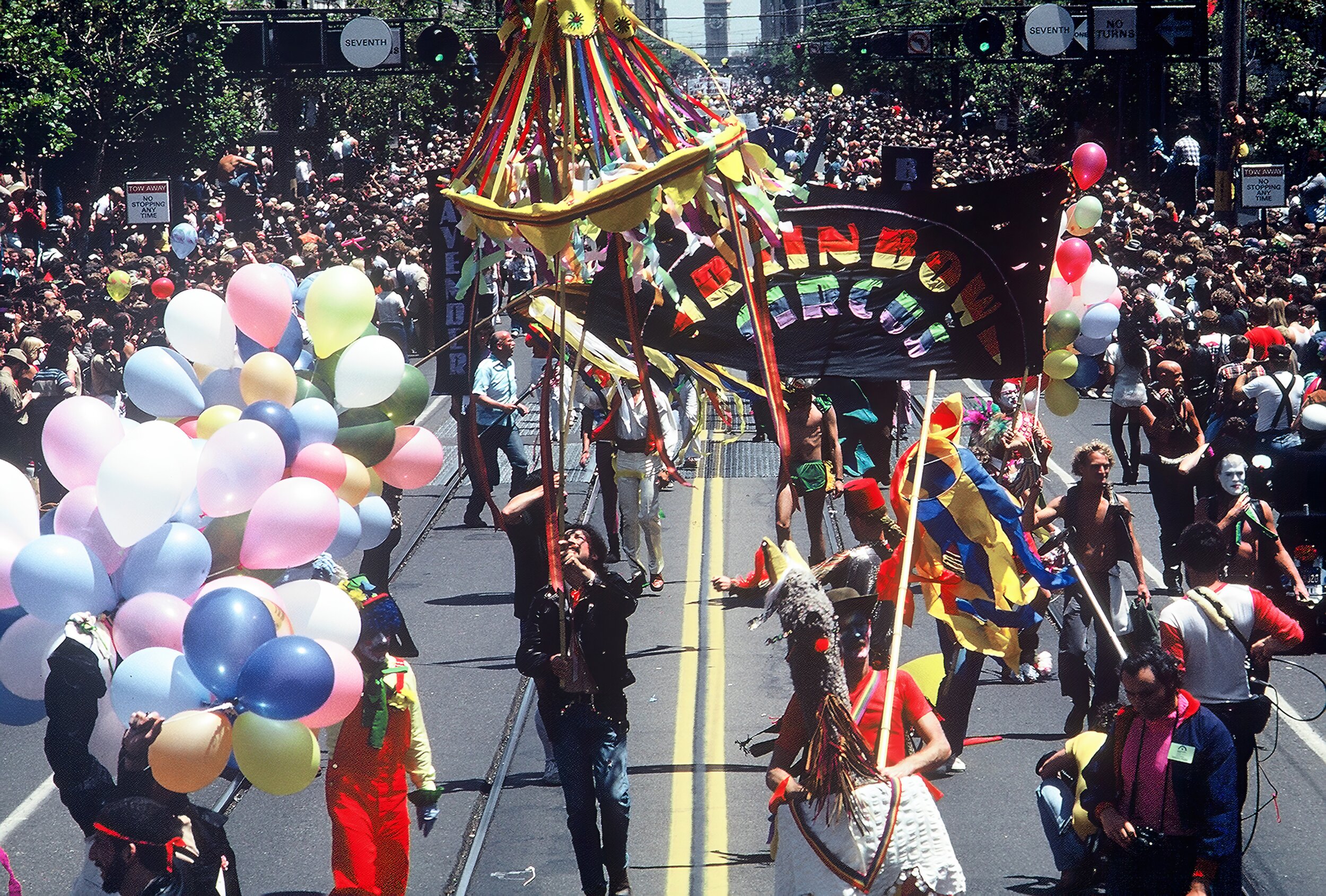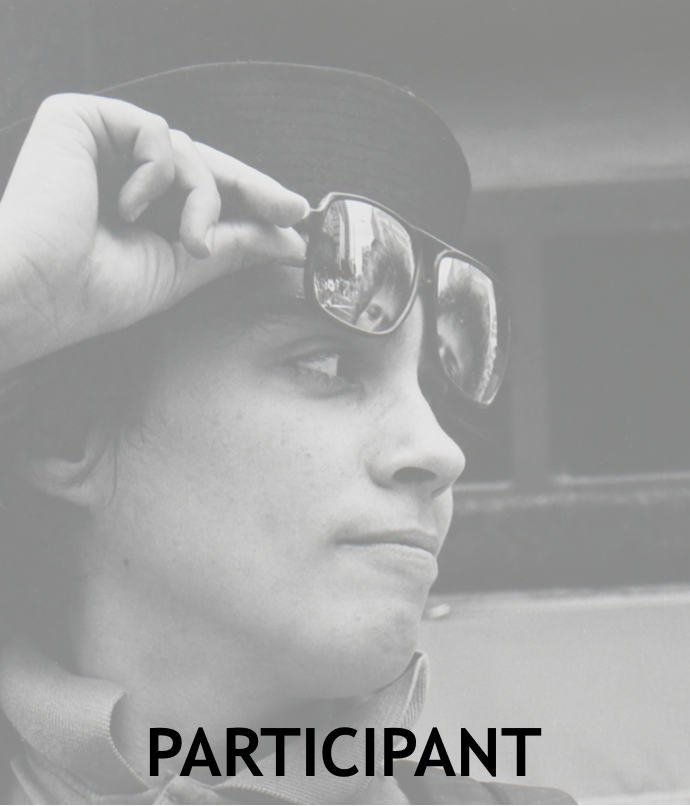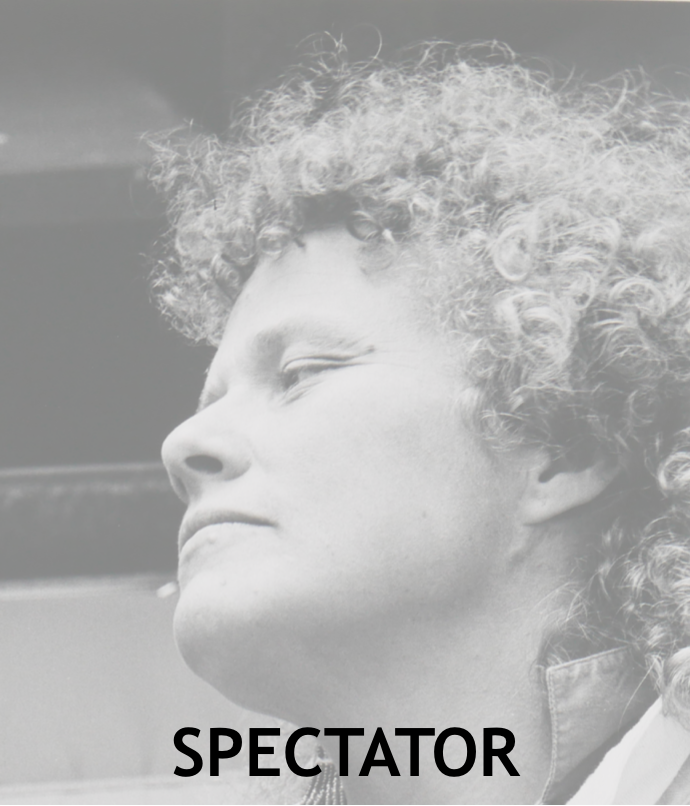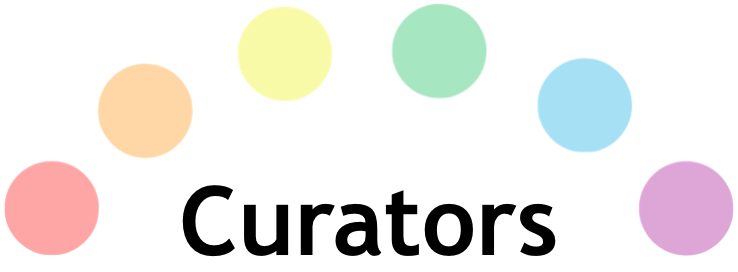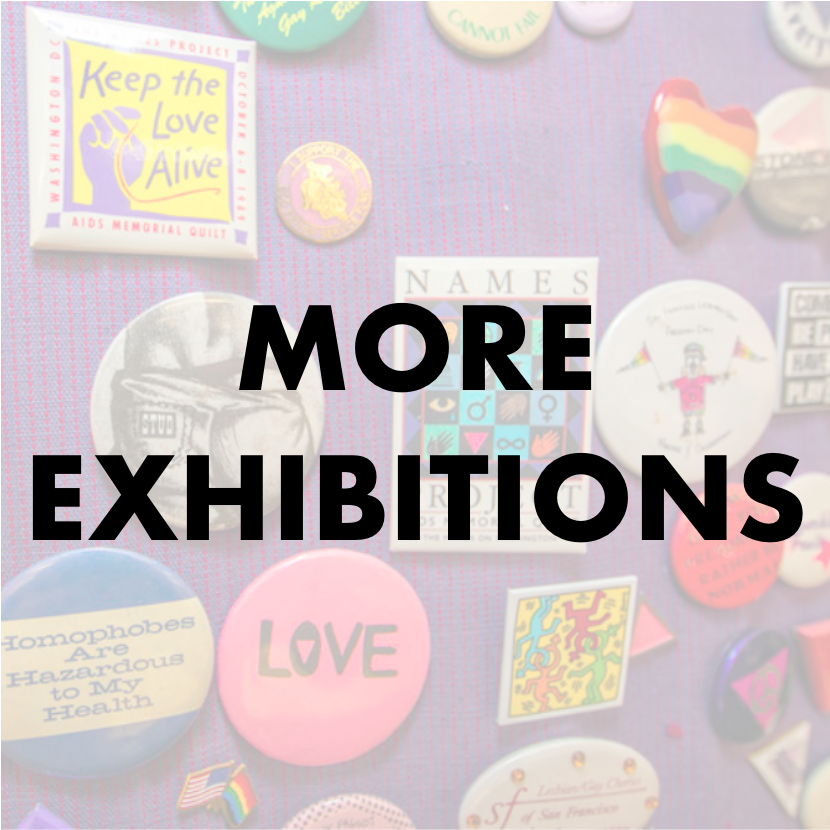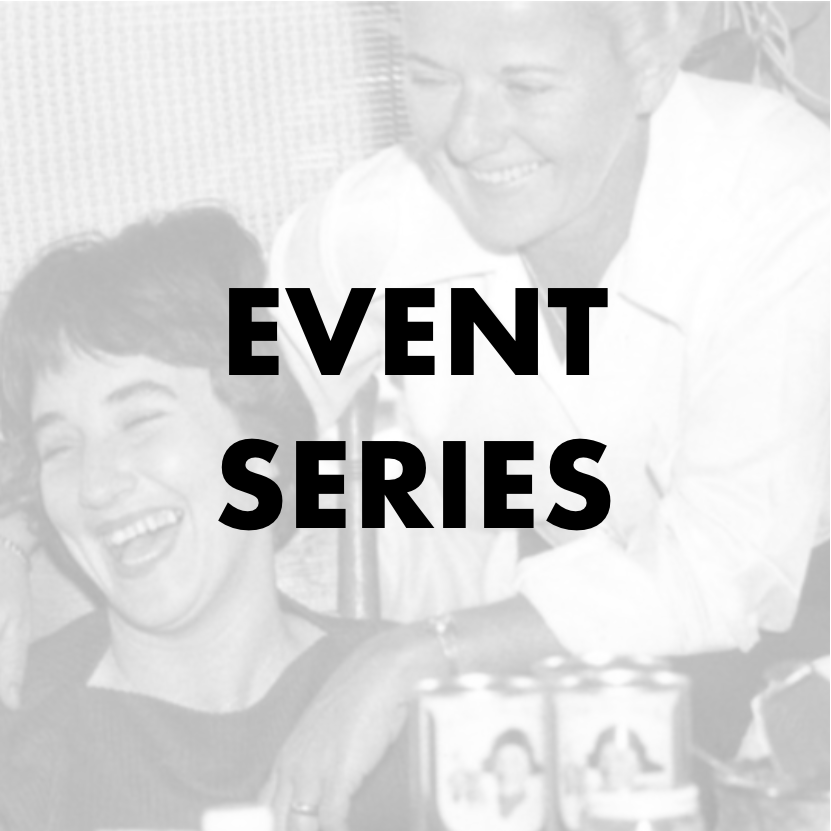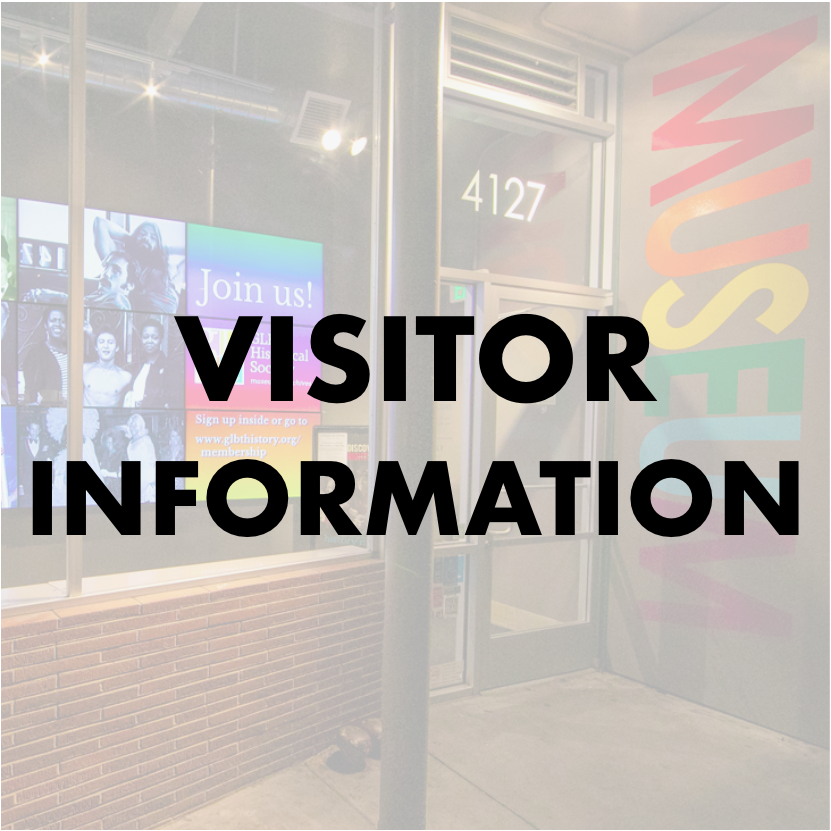
On June 27, 1970, a small group of LGBTQ people marched down Polk Street—then San Francisco’s most prominent queer neighborhood—to mark an event called “Christopher Street Liberation Day.” Commemorating the one-year anniversary of the historic Stonewall uprising on Christopher Street in New York City, the march was followed the next afternoon, June 28, by an intimate “gay-in” picnic at Speedway Meadows in Golden Gate Park.
Fifty years later, the modest gatherings of 1970 have evolved into San Francisco Pride, a globally famous annual parade and celebration. One of the city’s most beloved public festivals, Pride welcomes hundreds of thousands of participants and spectators from around the world the last weekend in June.
This exhibition features nearly 60 photographs spanning five decades of Pride celebrations, 50 Years of Pride honors the LGBTQ community coming into its own in the best of times and the worst of times. Images drawn from the GLBT Historical Society’s archives are joined by photographs held by other institutions, as well as works by over 20 independent queer photographers who have captured Pride over the years.
Curators Lenore Chinn and Pamela Peniston have employed a multifaceted curatorial approach, selecting images that document the event’s humble origins in the 1970s to the massive gatherings of recent years. Their choices highlight the diversity of both the photographers and the subjects depicted. The curators evaluated each photo based on its intrinsic aesthetic beauty as well as its ability to convey how people were experiencing Pride events.
Scrapbook page with four photos, 1978; San Francisco Gay Freedom Day Marching Band and Twirling Corps Collection (2017-07), GLBT Historical Society.
Stonewall contingent, San Francisco Gay Freedom Day Parade, 1979; photograph by Marie Ueda, Marie Ueda Collection (2006-12), GLBT Historical Society.

Today, Pride weekend festivities commence with the Trans March on Friday, continue with the Dyke March on Saturday and culminate in the parade and festival on Sunday.
Although these are run by independent organizing boards and in entirely different ways, they all showcase the breadth of the LGBTQ communities.
The view of the celebrations from top of the City Hall dome, 2008; photograph by Rick Gerharter, used with permission, all rights reserved.
Queen in Red Shirt, 1985; photograph by H. Lenn Keller, used with permission, all rights reserved.
Umbrella, 2012; photograph by Adam Chin, used with permission, all rights reserved.
Royalty, 2011; photograph by Adam Chin, used with permission, all rights reserved.

Over time, Pride has been transformed and diversified from a largely white, male, middle-class gay gathering to an event that represents the full spectrum of gender, race, ethnicity, class, gender identity and expression, sexuality and ability.
Jerome Caja as Konnie Krishna, 1990; photograph by Jim James, used with permission, all rights reserved.
“SICK!”, magazine spread in the National Enquirer, 1980; San Francisco Gay Freedom Day Marching Band and Twirling Corps Collection (2017-07), GLBT Historical Society.
The Dykes on Bikes, 1986; photograph by Chloe Atkins, used with permission, all rights reserved.

Phyllis Lyon (left) and Del Martin (right), founders of the pioneering lesbian organization the Daughters of Bilitis, as Grand Marshals of the 1989 Gay Freedom Day Parade on the 20th anniversary of the Stonewall Riots; photograph by Tom Levy, courtesy of the San Francisco Chronicle, used with permission, all rights reserved.
These photographers provide a vital lens to LGBTQ history, illustrating that together:
We rose up after the assassinations of San Francisco Supervisor Harvey Milk, the first openly gay elected official in California, and Mayor George Moscone in 1978.
We supported community members suffering from the deadly AIDS epidemic and we protested the government’s shameful lack of response.
We won official recognition for our families, including adoption rights and the legalization of same-sex marriage.
50 Years of Pride also celebrates the photographers who were present documenting with their own creative and unique perspectives. Their work allows multitudes to meet and commemorate politicos, activists or community heroes; issue-oriented contingents; and LGBTQ-affinity groups.
Gabrielle Daniels (left) and Merle Woo (right) carrying a sign that reads “People of Color, Feminists, Jews, Gays, Fight Back,” 1980; photograph by ©2020 JEB (Joan E. Biren), used with permission, all rights reserved.
Transgender Family, San Francisco, 1994; photograph by Cathy Cade, used with permission, all rights reserved. © The Regents of the University of California, University of California, Berkeley.

The experience of Pride has evolved over the years from a relatively small, grassroots event that has grown along with the LGBTQ community, into a worldwide celebration. As we built new LGBTQ community organizations of every type, style and size, we celebrated our cultures, enhanced our visibility by coming out in droves and demanded our civil rights unapologetically.
"Rise, Resist, Unite,” 2017; photograph by Lenore Chinn, used with permission, all rights reserved.
Pride is the growth of a movement charted politically and culturally from an era marked by resisting homophobia, to challenging the treatment of HIV/AIDS, and through the victory of marriage equality.
Unknown, Esi and Bailey, Trans March, 2017; photograph by Mason J., used with permission, all rights reserved.
![J. Mason_[Unknown], Esi, Bailey Trans March_2017.jpg](https://images.squarespace-cdn.com/content/v1/5b53b13285ede173115cb784/1589250283756-DXBQHSSGKTHCSAEK2KQ5/J.+Mason_%5BUnknown%5D%2C+Esi%2C+Bailey+Trans+March_2017.jpg)
Men’s Joe Smith, 1986; photograph by Jim James, used with permission, all rights reserved.
Over the past half-century, San Francisco Pride has reflected and refracted the LGBTQ community’s priorities, responses and activism in times of hope and despair, triumph and setback.
One thing has remained constant: Pride is, above all, a vibrant and joyful celebration of the LGBTQ community.
Rochelle and her son dance at Gay Pride, San Francisco, 1993; photograph by Cathy Cade, used with permission, all rights reserved. © The Regents of the University of California, University of California, Berkeley.
participants & spectators.
Michael Johnstone and his partner David Faulk as Mrs. Vera of Verasphere, Community Grand Marshal, 2017; photograph by Jane Philomen Cleland, used with permission, all rights reserved.

Lenore Chinn is a painter, photographer and cultural activist who works to create structures of personal and institutional support that both sustain critical artistic production and advance movements for social justice. Portraiture, both in painting and photography, is at the core of her visual art practice. Her current street photography chronicles a rapidly changing sociopolitical landscape. A San Francisco native, she was a founding member of Lesbians in the Visual Arts, a co-founder of the Queer Cultural Center and has been active in the Asian American Women Artists Association since the group was founded.
Pamela Peniston is a founding member and artistic director of the Queer Cultural Center, and has been one of the curators for the visual and performing arts at the National Queer Arts Festival since its inception. She has won numerous awards for her work designing and painting sets for national and Bay Area theatrical and dance companies. Peniston’s photographic interests are split among the wonder and beauty of nature, women in windows, the beauty of simple architectural elements and the community and humanity of people around the world.
Photographs from various collections at the GLBT Historical Society Archives are accompanied by the following independent photographers:
This exhibition has been made possible by the generous support of San Francisco Pride. Additional support for 50 Years of Pride is provided by the National Endowment for the Arts and San Francisco Grants for the Arts.
Nalini Elias, Director of Exhibitions and Museum Experience, Website Design
Leigh Pfeffer, Manager of Museum Experience, Public Programs
Jeff Raby, Graphic Design, Creatis Group, Inc.
Mark Sawchuk, Ph.D., Communications Manager, Editor
Ramón Silvestre, Ph.D., Museum Registrar and Curatorial Specialist
Contact, GLBT Historical Society
Copyright © 2020 The GLBT Historical Society; all rights reserved.
The contents of this exhibition may not be reproduced in whole or part without written permission.











